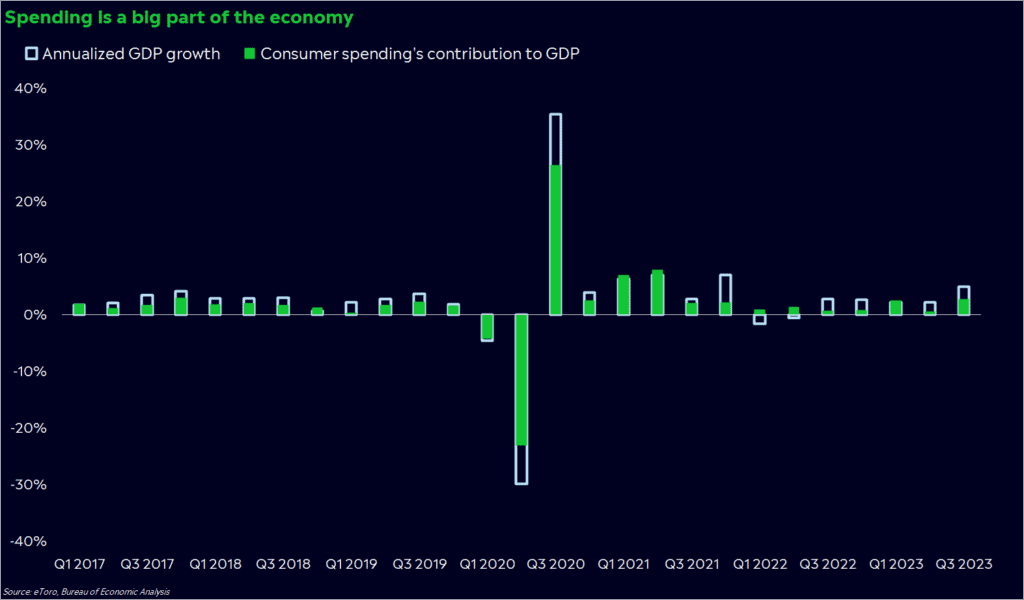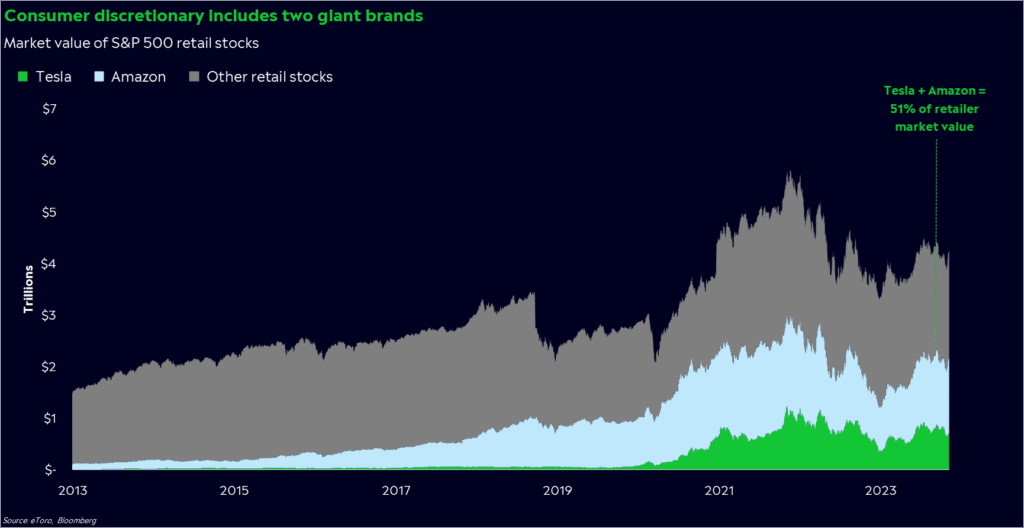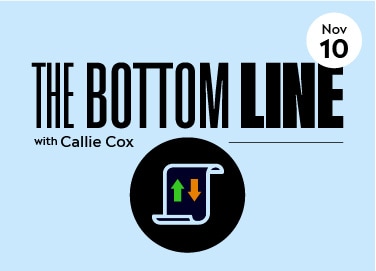Is it too early to talk about Christmas?
Not if you’re Mariah Carey — or if you’re invested in some of the biggest retail brands.
Retail (or consumer discretionary) stocks have been a hotly debated pocket of the market. Wall Street has crowed about a recession all year, yet retailers are one of the best-performing industries in the stock market.
We’re heading into two important seasons over the next few weeks: retailer earnings, and more importantly, the holiday season.
And while you may not have your gift list sorted yet, ‘tis the season for spending signals.
Spending saves the economy
The American spender has been the biggest surprise this year. At the beginning of 2023, a wide swath of Wall Street economists expected the US to fall into a recession by the end of the year.

Turns out those forecasts were way off the mark. People kept their jobs, wages kept growing, and inflation slowly came into check. Credit card and loan delinquencies have risen, but not to alarming levels. And true to form, Americans spent a lot of money, especially on Taylor Swift tickets.
Now, we’re in the most wonderful time of the year, and Americans’ wallets are in decent shape. Early estimates from the National Retail Federation show this holiday season could be decent, with spending growing at least 3% relative to last year. Gas prices are down more than 10% since September, freeing up even more extra cash for gifts.
Wall Street analysts feel good about retail stocks beyond the holidays, too. Earnings for the S&P 500’s consumer discretionary sector are expected to grow at a 17% pace year–over-year in 2024, the second-strongest profit growth of any industry.
You have a long list of reasons to feel cheerful about retail stocks heading into the end of the year.
But when you take a look at the numbers, the vibes are more naughty than nice.
The naughty list
Retailer stocks have been one of the more disappointing storylines of this otherwise stellar earnings season. 17% of consumer discretionary stocks have missed earnings estimates, one of the worst performances for a sector this season. Investors have punished retailers after their earnings reports, too. Since October, retail stocks have dropped an average of 0.6% post-earnings, the worst reaction for any industry in the S&P 500.
Yes, the outlook for the US consumer may look surprisingly good. But in many cases, it may not be translating into stock returns.
I see two big reasons why.
First, consumer discretionary is a wide sector bucket, and you need to consider this when drawing conclusions about the sector. For one, Amazon and Tesla account for about half of the S&P 500’s retailer market cap and pretty much all of the space’s returns this year. Take Amazon and Tesla out of the equation, and the median S&P 500 retail stock is only up 6%.

This divergence has been especially apparent in earnings. Amazon and Tesla profits are expected to make up about 85% of total profit growth among consumer discretionary stocks next year. Suddenly, that 17% earnings forecast doesn’t look so impressive.
Also, different retailers have been subject to vastly different fortunes in this economy. Consumer services stocks have flourished this year on the heels of higher travel spending, with the median services-based retailer stock up 13.6% year-to-date. Look on the other end of the spectrum, though, and you’ll see that the median automobile and parts retailer is down 12.6% over the same period. Americans are being selective with their spending, and while that can keep the economy afloat, it leads to a divergence among companies within the sector.
There are bigger trends to consider, too. Yes, the US economy has been resilient, but it’s still under a lot of pressure. And while Americans are still spending money, they’ve been more selective about what they buy. Perhaps investors see this as a warning sign of things to come, and they’re logging gains in retail stocks while they can.
So what does this mean for me?
Think big and small. While this holiday season may be a busy one at the mall, it may not be a profitable one for some consumer-focused companies. Sometimes, obvious trends don’t always translate to good trades, so it’s important to study the underlying numbers to understand what’s going on. It’s a good time to compare your views on retailers as a whole versus your views on specific brands within the sector.
Stay nimble. Even though the big picture looks decent, the economic outlook could change quickly if we get a bad jobs report or retail sales number. Think about how to hedge against surprising economic data.
Be good. You don’t want coal in your stocking, right? Set your targets, stick to the numbers, watch upcoming earnings, and don’t give up on this market until we see recessionary signals in the job market.
*Data sourced through Bloomberg. Can be made available upon request.



